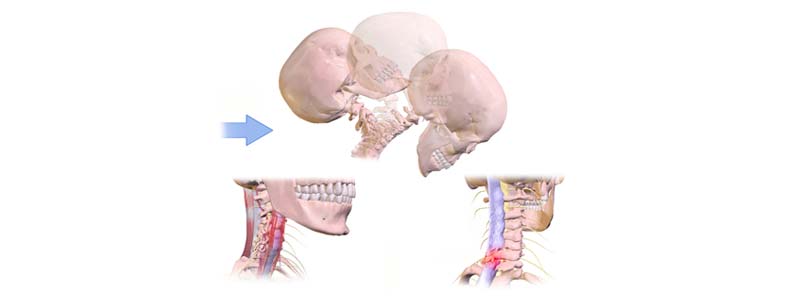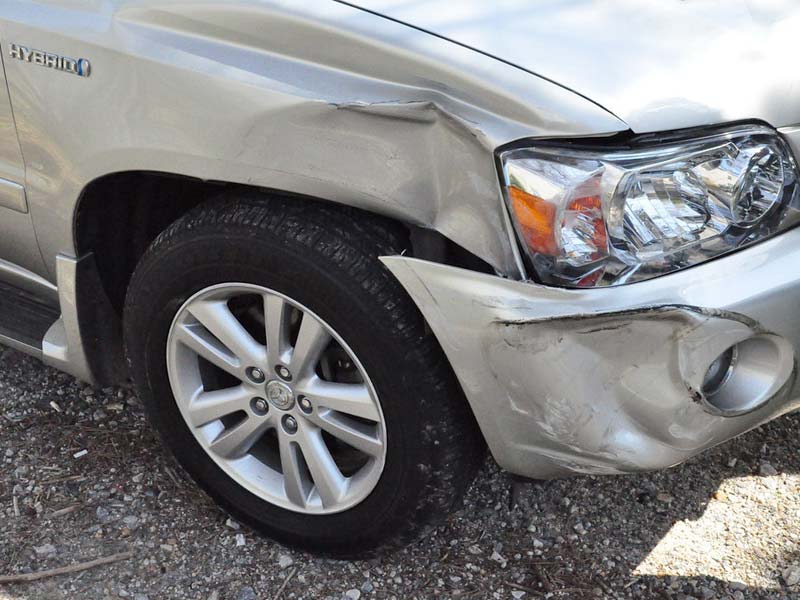A car wreck can be a traumatic and stressful time. It’s easy, in the chaos of it all, to lose track of all the tasks you need to do, like taking photos of the damage, trading insurance information and license details, and calling your insurance company, etc.
In the event of an accident, taking care of ourselves gets put on the back burner, especially with more minor collisions. It’s important to take care of yourself after an accident because injuries can hide beneath the adrenaline and present themselves after the fact.
Your doctor is able to examine your body and your symptoms to see where damage has occurred and work with you to figure the best plan of action for recovery.
The Car Accident
Major accidents that total your car seem like the no-brainer time to see a doctor, but did you know that many severe injuries can occur with even the smallest fender-benders? Your doctors are trained to asses the damage that isn’t immediately visible. The likelihood that your sore neck and back are related to more than just the initial impact is high.
If police and an ambulance are called to the scene of the accident, you’ll likely get a once-over from the paramedics to make sure you’re not in immediate danger. Their job is to ensure that you’re not suffering from life-threatening injuries. They’re not trained to diagnose and treat whiplash, sprains, torn muscles or ligaments, or internal bruising.
In the minutes following your collision, your body will release a flood of adrenaline. This “fight or flight” hormone is released to help your body prepare to fight or flee from an attacker. Adrenaline, also known as epinephrine, causes your heart rate to spike, your eyes to dilate, and your body to sweat as you prepare for the oncoming onslaught (even if it’s not actually coming). This neurochemical reaction will dull your immediate pain.

Common Injuries from Car Wrecks
The obvious injuries are sore muscles, and maybe some bruises where you hit a window or the airbag. There are so many other less visible injuries that can occur, though, in even the most minor of wrecks.
Whiplash
Whiplash occurs when, at the moment of impact, your neck is rapidly pushed forward and then snapped back. This motion can cause strain to your neck and spine in both the bones and in the muscles. Symptoms from this type of injury include soreness, headaches, and lack of focus. Without treatment, pain may get worse, or contribute to further injury.
Concussion
A concussion is caused by your brain moving around in your skull, causing bruising and bleeding. Your head doesn’t need to impact a surface to get a concussion; whiplash action is enough to cause a concussion. Symptoms from a concussion include but aren’t limited to headache, loss of consciousness, confusion, nausea, vomiting, and more.
Spinal Injuries
Your spine is simultaneously the central structure of your body and one of the more delicate parts. Severe injuries in your back can cause paralysis and lingering pain, but it’s the culmination of many small injuries that cause that kind of pain. Compressed discs and misaligned vertebrae can cause severe pain with movement, pinched nerves, migraines, and a plethora of other severe discomforts.
Internal Damage
Our seatbelts are designed to flex with us in normal conditions, but under dangerous circumstances, it locks down to protect us and restrain us in our seat. When the seatbelt locks down, it can cause bruising in the abdomen and hip area. Severe bruising internally can be hidden under other symptoms.
Abrasions
If there is a hard impact with the window, steering wheel, seatbelt, or side pillar, you may sustain an impact injury. If there is any broken glass, there is a good likelihood you’ll end up with cuts from the glass. You’ll want to make sure these types of injuries are cleaned and wrapped.
Legal Reasons to See Your Doctor
After a wreck, you should be in contact with your insurance. They deal with more than just the physical damage in your car. You pay for insurance to cover personal injuries, too. Seeing a doctor covers more than just the medical bases.
- Legal documentation of injuries – If for any reason you need to involve a lawyer to settle a case relating to your collision, you’ll need medical documentation of your injuries and costs associated.
- Future pain covered – If you don’t see a doctor and get your injuries treated, but need medical coverage or disability insurance in the future, you can be denied because of previous injuries.
- Settlement for Pain and Suffering – In a worst-case scenario, you can work with a lawyer to settle the claim with the other driver’s insurance. They’ll want documentation of the injuries and any time the treatment keeps you out of work.
Hope for the Best, Prepare for the Worst
As a driver, you have a certain level of obligation to be prepared to respond in a car wreck. Obviously, we all hope to never be involved in an accident, but it’s always going to be a risk we take when we drive.
Make sure to keep your insurance, registration, and emergency contact information readily available for easy exchange. Have an emergency first aid kit in your car to deal with small injuries. Some drivers keep a checklist of things that need to be done in case of a wreck in their glove box, which takes the stress out of remembering the important tasks.
Once you’ve had clearance from the police on the scene of the accident, call your insurance agent to sort out the details they need. Then, call us at Camas Swale. We will get you in to see your doctor for a full assessment of injuries and treatments as soon as we can.

